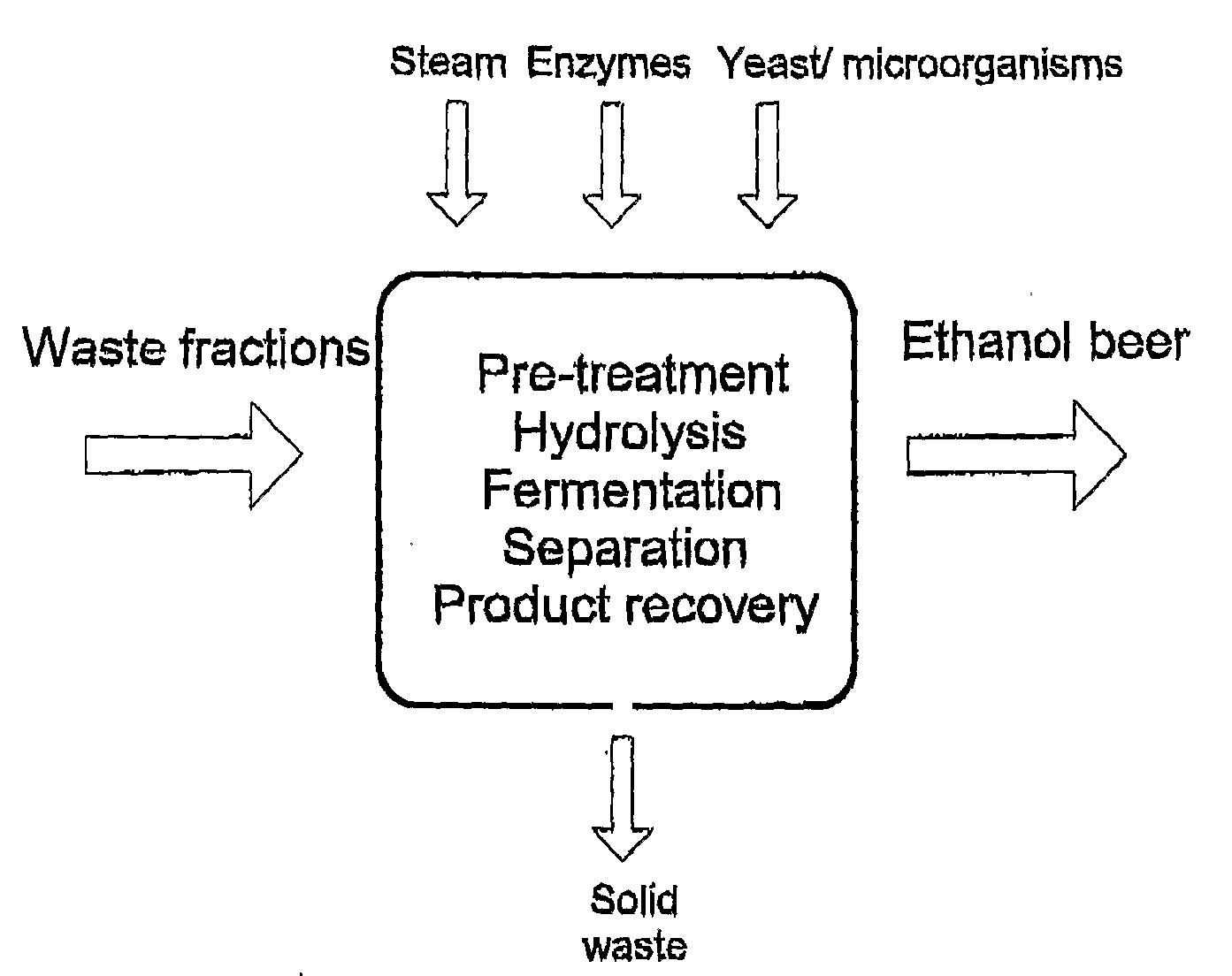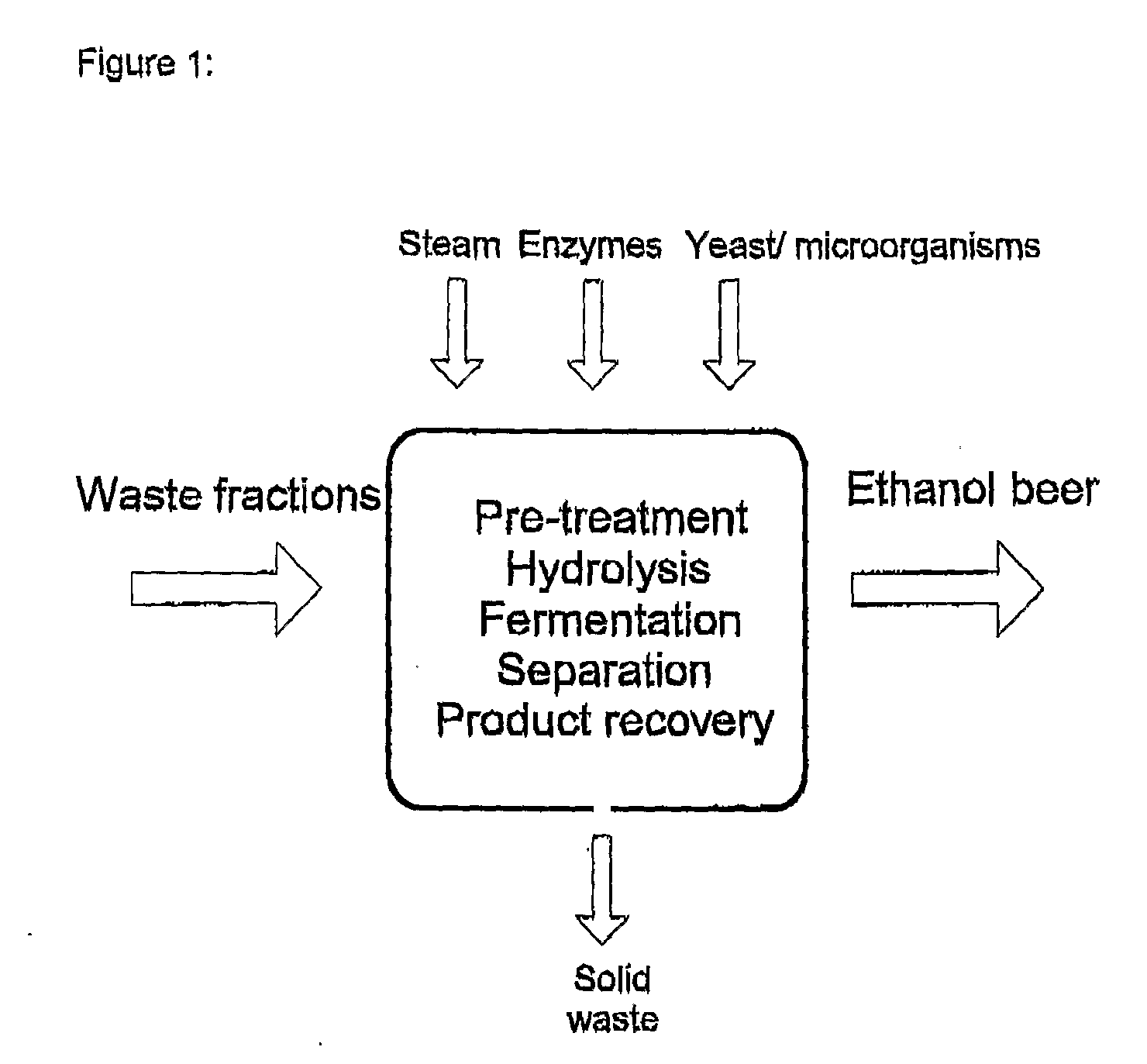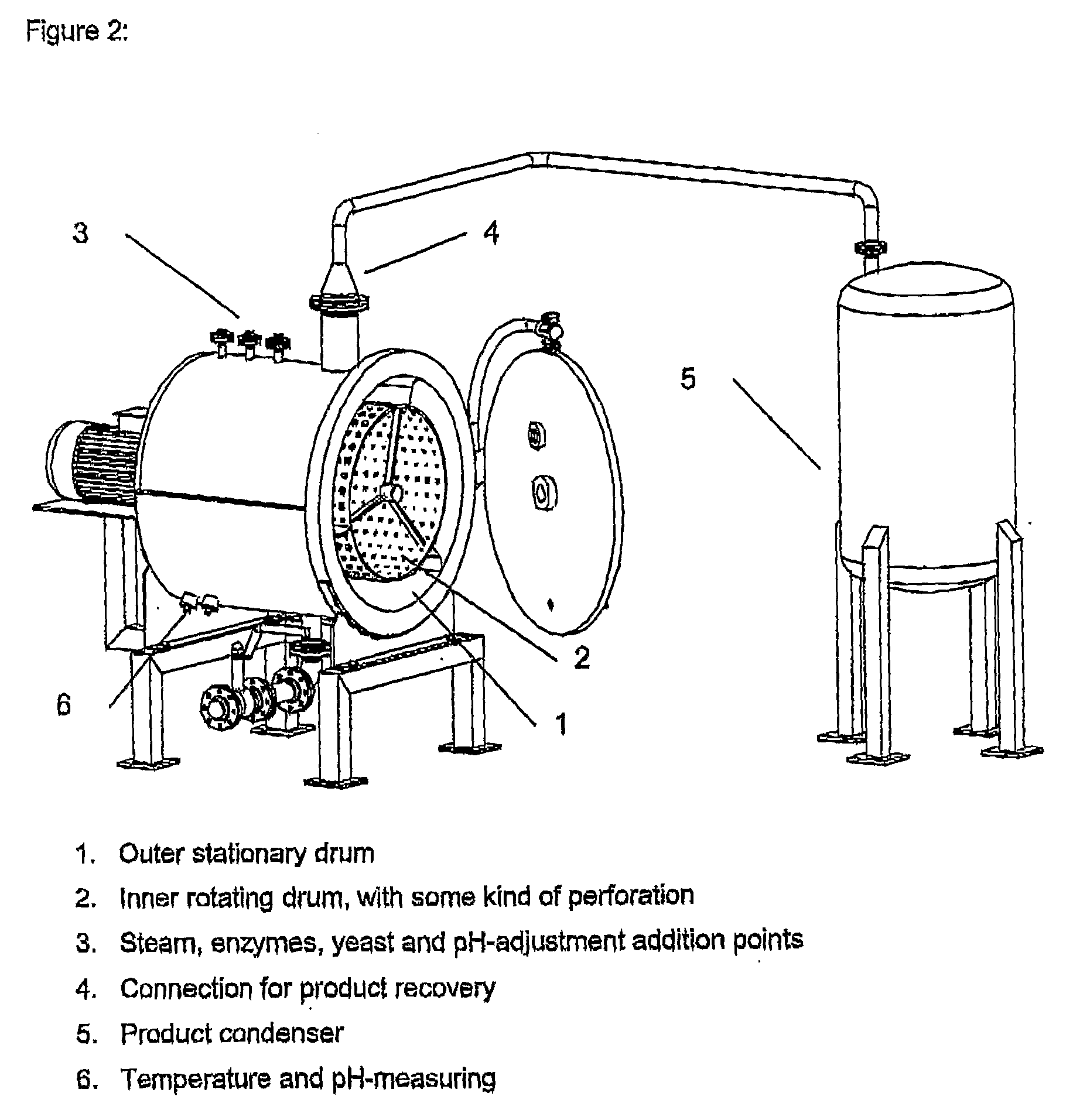Non-Pressurised Pre-Treatment, Enzymatic Hydrolysis and Frementation of Waste Fractions
a technology of enzymatic hydrolysis and waste fractions, which is applied in the fields of enzymology, waste based fuel, transportation and packaging, etc., can solve the problems of increasing restrictions, affecting the quality of waste water treatment,
- Summary
- Abstract
- Description
- Claims
- Application Information
AI Technical Summary
Benefits of technology
Problems solved by technology
Method used
Image
Examples
example 1
Experiments with High Cellulase Loading Conducted in a Cement Mixer
[0114]1) Ethanol Production from Untreated Municipal Solid Waste
[0115]12.2 kg of unsorted and untreated municipal solid waste from Odense Kraftvarmevasrk's waste pit, corresponding to an estimated amount of 8.5 kg dry matter, was loaded into a conventional rotary cement mixer, with a horizontal axis tilted about 10 degrees. The mixer consisted of two internal ribs along the long axis in order to ensure proper mixing of the material. A lid was mounted on the opening in order to keep the waste fraction inside the drum and to reduce evaporation from the mixer. The mixer drum rotated along the horizontal axis with a speed of 29 rpm.
[0116]A steam generator was connected to the rotating drum. Approximately 4.5 kg of saturated steam at 3 barg was added during a period of 35 minutes, of which 20 minutes was used to heat up the waste fraction and the remaining 15 minutes was retention time at 90-96° C.
[0117]The cement mixer w...
example 2
Experiment with High Cellulase Loading Conducted in Pilot Scale Reactor (FIG. 2)
[0131]Ethanol Production (Including Vacuum Stripping) from Source Sorted Organic Solid Household Waste and Paper
[0132]49.6 kg of source sorted municipal solid waste from deposal area Klintholm I / S and 16.7 kg paper (newspapers and advertising circulars) corresponding to an estimated amount of approximately 33.3 kg dry matter was loaded into the pilot reactor. The pilot reactor is consisting of a stationary drum with a perforated inner drum as can be seen on FIG. 2, the perforated Inner drum can rotate along the horizontal axis (in alternating directions with a speed of 0-18 rpm). The reactor is equipped with a cooling / heating jacket for temperature control, which is connected to an electrical heating element and to cooling water. The reactor can also be connected to a vacuum stripper for ethanol recovery.
[0133]Approximately 21 kg of saturated steam at 4 barg was added during a period of 60 minutes while ...
example 3
Experiment with Low Cellulase Loading Conducted in Pilot Scale Reactor (FIG. 2)
[0140]Ethanol Production from Unsorted Municipal Solid Waste and Paper
[0141]32.1 kg of MSW from two families in one week was added in closed waste bags and 8.1 kg additional paper (newspapers and advertising circulars) corresponding to an estimated amount of approximately 30 kg dry matter was loaded into the pilot reactor. To lower the dry matter content of the waste 12.5 l water was added. For detailed description see example 2.
[0142]After loading the waste was heated to 90° C. with the heating jacket and additional steam (4 barg) to the reactor chamber. When 90° C. (also checked manually by a handheld thermometer inside the drum) was reached, the temperature was kept there for 30 minutes while mixing. Afterwards the mixture was cooled to approximately 50° C. with the cooling jacket while the pH was adjusted to approximately 5 by addition of solid citric acid.
[0143]At correct temperature and pH, enzymes ...
PUM
| Property | Measurement | Unit |
|---|---|---|
| Temperature | aaaaa | aaaaa |
| Temperature | aaaaa | aaaaa |
| Fraction | aaaaa | aaaaa |
Abstract
Description
Claims
Application Information
 Login to View More
Login to View More - R&D
- Intellectual Property
- Life Sciences
- Materials
- Tech Scout
- Unparalleled Data Quality
- Higher Quality Content
- 60% Fewer Hallucinations
Browse by: Latest US Patents, China's latest patents, Technical Efficacy Thesaurus, Application Domain, Technology Topic, Popular Technical Reports.
© 2025 PatSnap. All rights reserved.Legal|Privacy policy|Modern Slavery Act Transparency Statement|Sitemap|About US| Contact US: help@patsnap.com



